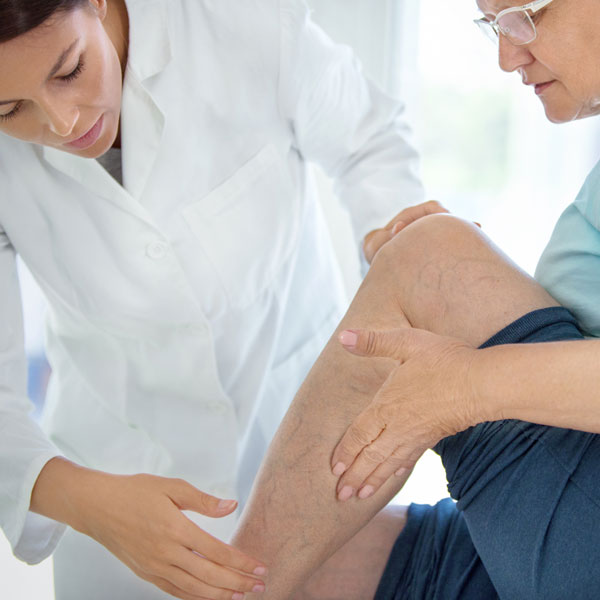Learn About Peripheral Arterial Disease
Your Guide to Peripheral Artery Disease
Understanding Peripheral Artery Disease

Get Familiar With the Symptoms of PAD
Awareness is the first step toward action. Sometimes, PAD’s symptoms are subtle and easily mistaken for something less serious. Familiarize yourself with these symptoms and come talk to the team at Precision Vascular Kentucky if you have concerns:
- Leg pain while walking
- Coldness in the legs or feet
- Numbness or weakness in the legs
- Changes in leg color
- Swelling feet
- Shiny skin
- Hair loss on the legs
- Foot/leg wounds that do not heal
- Slowed toenail growth
Recognize the Risk Factors
Swelling legs and PAD can happen to people of all ages and backgrounds. However, some individuals are at higher risk for the conditions than others. If any of these risk factors apply to you, you may have a higher likelihood of developing PAD:
- Age—Young people can develop PAD, but the condition is most common in patients older than 65.
- Smoking—Individuals who smoke are more likely to be affected by PAD.
- Family History—Do you have family members with PAD? You’re likely at a higher risk. Your risk also goes up if you have a family history of heart disease and stroke.
- Diabetes—If you have diabetes, high blood pressure, or high cholesterol, you should stay vigilant for the signs of PAD.
- Obesity—Those with a body mass index over 30 are also at an increased risk for peripheral artery disease.
Diagnosis and Treatment for PAD
At Precision Vascular Kentucky, our skilled team diagnoses and treats PAD using advanced technologies and diagnostic tools. After a thorough examination and consultation, we may recommend tests like angiography, ultrasound, or blood tests.
Treatment for PAD focuses on symptom management, improving mobility, and preventing atherosclerosis progression. This can involve lifestyle changes, medication, or, in severe cases, surgery or angioplasty. We’ll collaborate closely with you and your doctor to create a personalized treatment plan that suits your needs.
What Happens When PAD Is Untreated?
We don’t ever want to think about getting a diagnosis like PAD. This fear often keeps people from seeking treatment. However, if you’ve noticed the tell-tale signs of PAD, it’s imperative to seek expert medical advice. Left untreated, peripheral artery disease can lead to critical limb ischemia, stroke, or heart attack. Each of these conditions can have severe consequences for your continued health. Seeking prompt treatment is your best bet for minimizing your chances of complications.
Strategies for Preventing PAD
The good news is that PAD is largely preventable. Adopting healthier lifestyle habits can significantly reduce your risk. Here are our tips for reducing the probability that you will develop peripheral artery disease:
- Quit Smoking—This is easier said than done, but it’s difficult to overstate the importance of quitting smoking. This is one of the most impactful changes you can make to reduce your PAD risk.
- Exercise Regularly—Exercise is good for everyone, but it’s especially necessary for those with a high risk of PAD. Aim for at least 30 minutes of moderate exercise most days of the week.
- Maintain a Healthy Diet—Focus on a diet rich in fruits, vegetables, whole grains, and lean protein.
- Manage Your Weight—Again, this is another tip that is easier said than done. Work with your healthcare providers to develop a weight management plan that lessens the strain on your arteries.
- Get Frequent Health Screenings—Check in with your healthcare provider for blood pressure, cholesterol, and diabetes screenings. This allows us to identify the signs early and begin treatment before symptoms worsen.
Get in Touch With Precision Vascular Kentucky
At Precision Vascular Kentucky, your health is our priority. Our team is proud to serve residents across Kentucky and Southern Indiana with high-quality personalized wound care and a range of other services. Don’t let PAD control your life. Contact us today, and let’s journey towards improved vascular health together.

